DPM1 Distortion Probe Microphone System
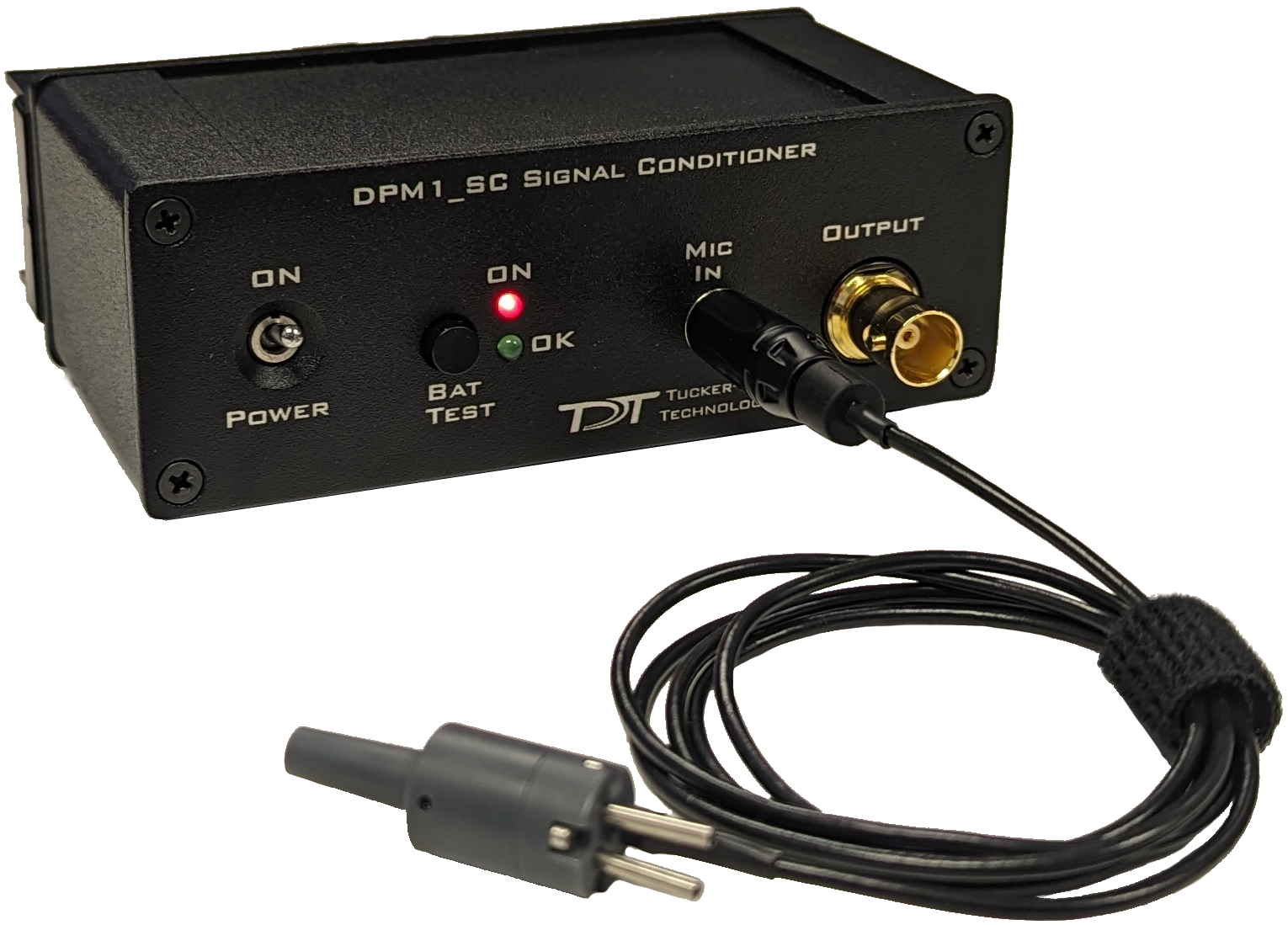
Overview
The DPM1 Distortion Probe Microphone System measures distortion product otoacoustic emissions (DPOAE). It consists of a battery-powered signal conditioner and the probe microphone itself. It operates in the 1 kHz to 40 kHz range and can detect low intensity signals in the range of 0 dB SPL.
The provided cable and ear tip carry the response from the microphone into the system via a front panel BNC output. The microphone tip also has two small tube-connectors to carry the stimuli to the subject's ear. Slide the closed-field speaker tubes over these small stainless steel tubes, ensuring a snug fit.
A full system typically includes an RZ6 processor to generate two channels of stimuli and record one, and two closed-field speakers such as the MF1 or EC1 speakers. The speakers connect to two small stainless steel tube-connectors which carry the stimuli to the subject's ear.
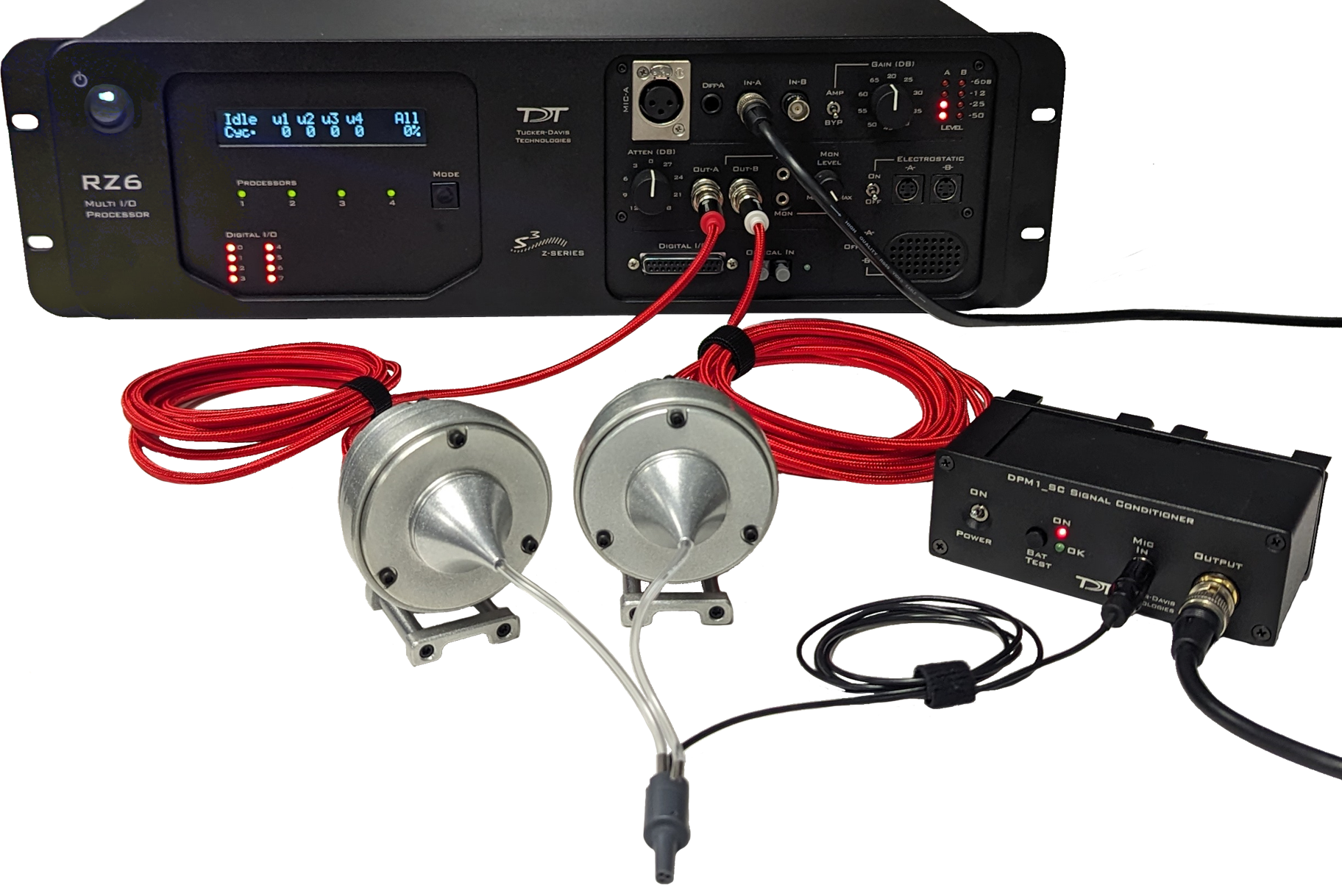
Microphone Kit
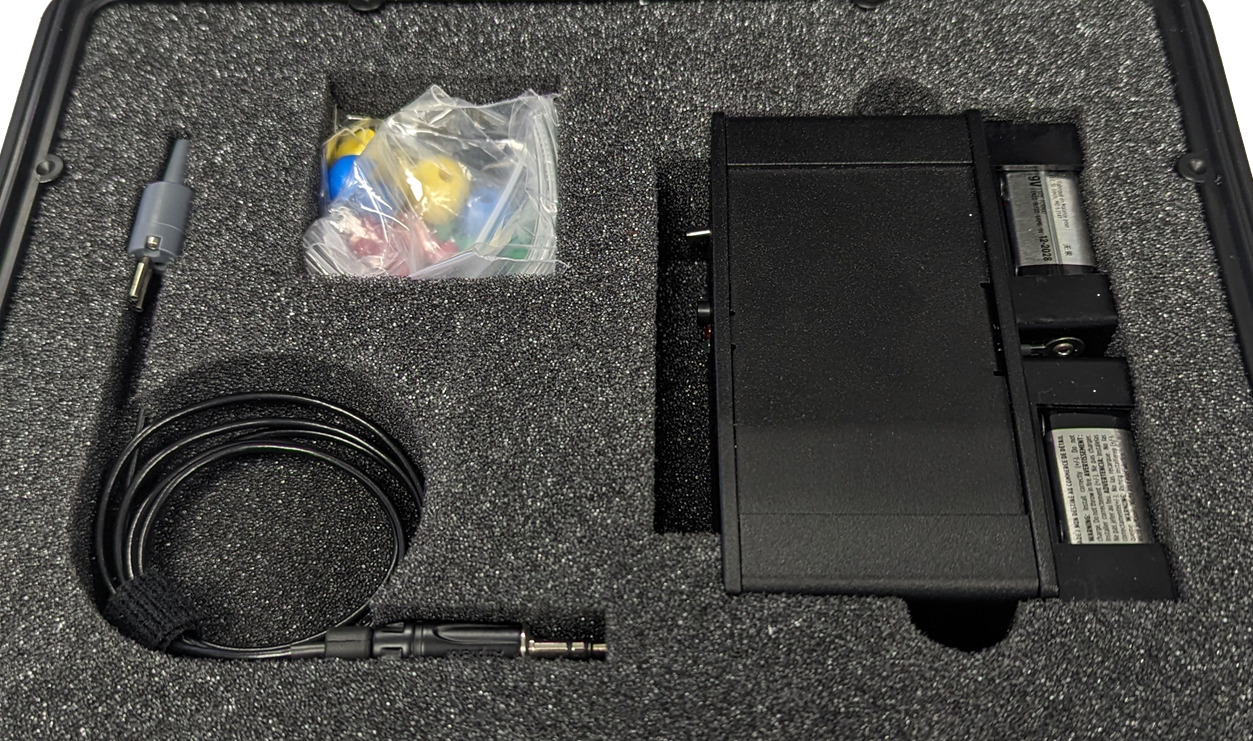
The DPM1 system kit includes:
- DPM1_MIC - Microphone for Distortion Probe Microphone System
- DPM1_SC - Signal Conditioner for Distortion Probe Microphone System
- Four 9 V batteries
- Assorted ear tips:
- Four each 4 mm, 5 mm, 6 mm
- Two each 8 mm, 10 mm, 13 mm, 16 mm
- Four 10 cm pieces of PVC tubing: 1/16" ID, ⅛" OD, 1/32" wall
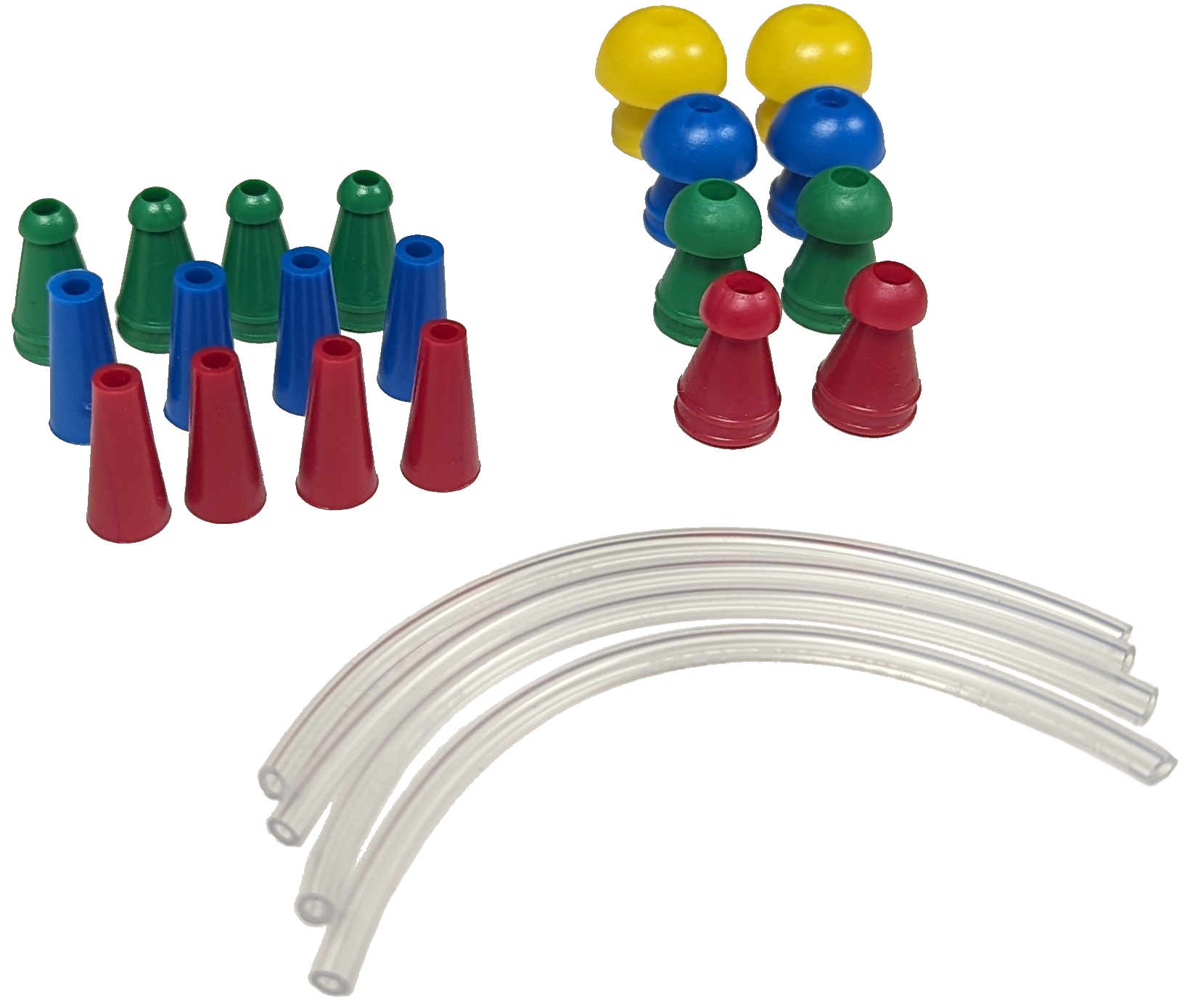
Power
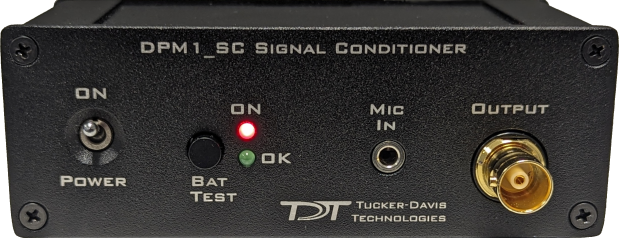
The DPM1_SC is powered by two 9V batteries. Alkaline batteries are recommended. The "Bat Test" button on the front of the SPM1_SC checks the battery level and lights the green "OK" LED when it is acceptable.
Important
The Battery Test is only accurate with the DPM1_SC powered OFF
Cable Connection
The tubing will transfer the signal best when it is kept straight. Note that the system performance is dependent on the coupling system used and the ear of the animal. Users should test the device under experimental conditions to ensure it meets their requirements. If using BioSigRZ software, see the DPOAE Guide for calibration tips. Technical Specifications measured under specific controlled conditions are provided for comparison purposes.
Routine Care and Maintenance
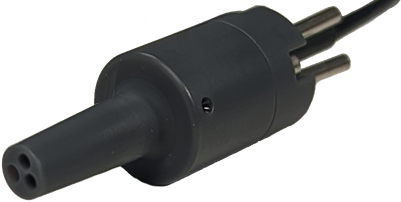
Inspect the microphone tip for visual damage or obstruction of the speaker and microphone holes prior to use. The microphone tip can occasionally get clogged up with ear wax. DO NOT stick pins or other sharps into the microphone tip as it could cause damage or push the occlusion farther into the microphone cavity. Instead, TDT recommends adding a 3-4 mm of isopropyl to a dish and swirling the tip of the microphone in the alcohol. This dissolves the wax in many cases. If there is still debris clogging the microphone hole, contact TDT for an RMA for repair.
The outside of the DPM1 can be wiped down with isopropyl to sanitize it after each use.
DPM1 Technical Specifications
Note
*Rechargeable batteries are NOT recommended
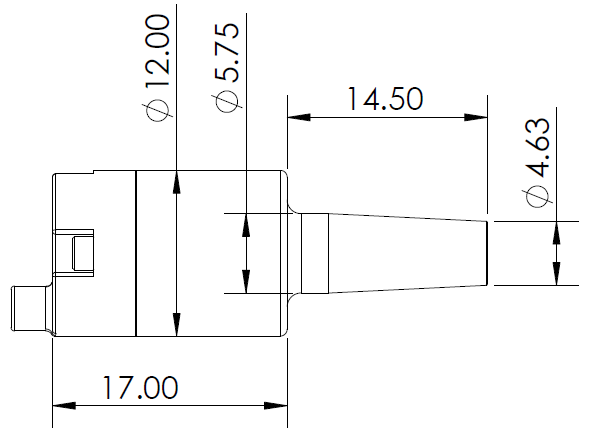 |
| Microphone Tip Dimensions (all values in mm) |
Frequency Response
The results of the calibration will vary depending on the type of ear to which the microphone is coupled and the length of the tube that is coupled to the ear. This curve is provided as representative of the type of response that may be obtained in a closed field.
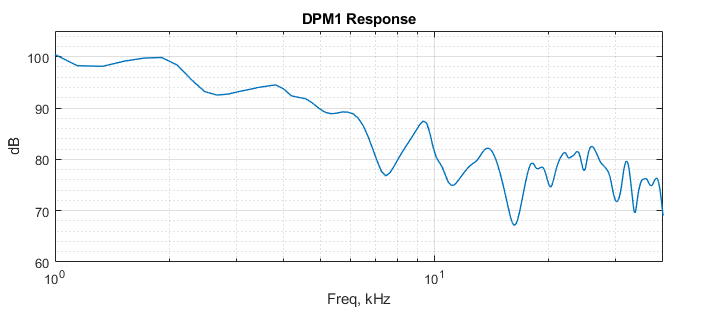 |
| Example Closed-field Frequency Response |
Every experimental setup is unique. It is important to calibrate the response of the speaker in each experimental setup.